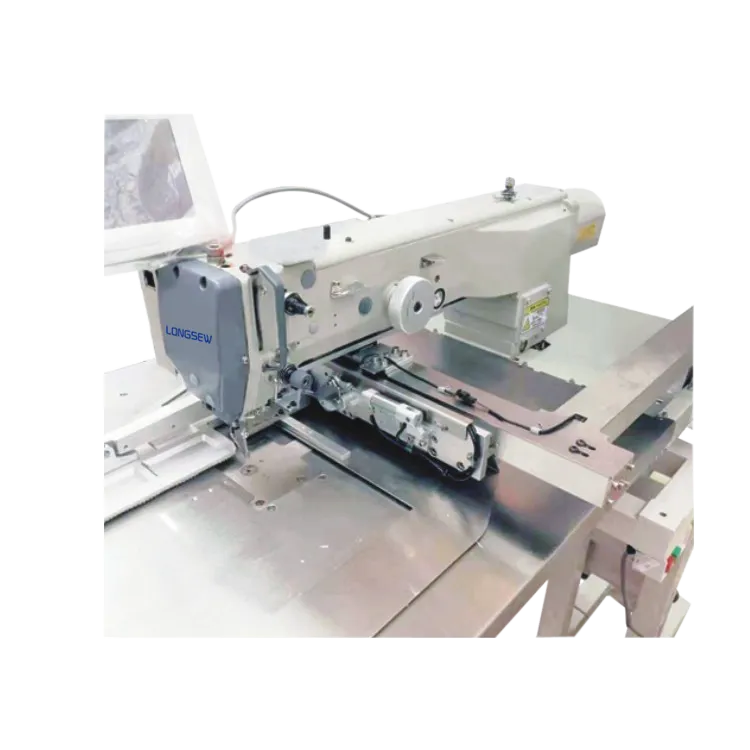Affordable Options for Automatic Sewing Machines in 2023
The Price of Automatic Sewing Machines Factors and Trends
In the contemporary world of fashion and textile production, automatic sewing machines have become indispensable tools. They enhance efficiency, consistency, and precision in the sewing process, catering to both industrial and domestic needs. As consumers and businesses look to invest in these machines, understanding the pricing landscape is crucial. This article explores the factors affecting the price of automatic sewing machines and current market trends.
Understanding Automatic Sewing Machines
Automatic sewing machines are designed to perform various sewing tasks with minimal human intervention. They utilize advanced technology to sew, cut, and finish fabrics automatically, making them ideal for mass production. These machines range in complexity and functionality, from simple home sewing machines to sophisticated industrial models capable of executing intricate stitching patterns at high speeds.
Factors Influencing Prices
1. Type of Machine The price of automatic sewing machines varies significantly based on their type. Domestic machines, which generally have fewer features and lower speeds, are more affordable, usually ranging from $200 to $1000. On the other hand, industrial sewing machines, equipped with advanced features such as automatic threading, embroidery capabilities, and high-speed operation, can range from $1,000 to over $10,000.
2. Brand Reputation The reputation of the manufacturer plays a crucial role in pricing. Established brands with a history of reliability and quality, such as Brother, Janome, and Juki, often command higher prices due to their reputable technology and customer support. In contrast, lesser-known brands may offer more affordable options, but the trade-off could be in terms of durability and after-sales service.
3. Features and Technology The complexity of features significantly affects the cost. Basic models may allow for fundamental stitching, while advanced machines offer features such as programmable settings, touchscreens, and compatibility with software for designing patterns. The more sophisticated the features, the higher the price tends to be.
4. Market Demand and Supply The overall demand for sewing machines, influenced by fashion trends, crafting hobbies, and industrial production needs, can affect pricing. For instance, during peak crafting seasons or economic downturns, prices may fluctuate based on demand. The availability of machines also plays a role; if production exceeds demand, prices may dip, while shortages can lead to price increases.
automatic sewing machine price

5. Accessories and Additional Costs When considering the price of an automatic sewing machine, it’s important to account for accessories and maintenance costs, such as presser feet, extra bobbins, and routine servicing. These additional costs can impact the total investment required for a sewing setup.
Current Market Trends
1. Increased Popularity of Home Sewing In recent years, particularly post-pandemic, there has been a significant surge in sewing as a hobby. This trend has driven up demand for automatic sewing machines not only among hobbyists but also among those interested in DIY fashion and home decor. Consequently, more affordable models have been introduced to cater to this growing audience, making automatic sewing machines accessible to a broader range of consumers.
2. Technological Advancements The integration of smart technology into sewing machines is becoming increasingly common. Machines that connect to the internet for pattern downloads, software updates, and troubleshooting are gaining popularity. Such cutting-edge machines tend to be priced at the higher end of the spectrum but are appealing due to their innovative functionalities.
3. Sustainability and Eco-Friendliness As consumers become more environmentally conscious, there is a growing trend toward machines that allow for sustainable sewing practices. Brands that highlight sustainability in their manufacturing processes may attract consumers willing to pay a premium.
4. Online Retail Growth The rise of online retail has transformed how consumers shop for sewing machines. E-commerce platforms often offer competitive prices, extensive reviews, and no-contact delivery, making it easier for consumers to find machines that fit their budget without having to visit physical stores.
Conclusion
Investing in an automatic sewing machine involves careful consideration of various factors, including machine type, brand reputation, features, and current market trends. As the demand for sewing machines evolves, so too do their prices, which reflect a complex interplay of technological advancements, consumer preferences, and market dynamics. Whether for personal use or industrial application, understanding these factors can help consumers make informed decisions that align with their sewing needs and budget.
-
Industrial Cylinder Arm Sewing Machine: Revolutionizing Heavy-Duty SewingNewsJul.28,2025
-
Cylinder Arm Sewing Machine: Perfect for Special Sewing ApplicationsNewsJul.28,2025
-
Cylinder Bed Sewing Machine: Essential for Sewing Complex MaterialsNewsJul.28,2025
-
Heavy Duty Sewing Machine: The Essential Tool for Industrial ApplicationsNewsJul.28,2025
-
Computerized Pattern Sewing Machine: Revolutionizing Precision StitchingNewsJul.28,2025
-
Heavy Duty Industrial Sewing Machine: Power Meets PrecisionNewsJul.28,2025
-
Leather Sewing Machine: The Industrial Standard for Tough MaterialsNewsJul.18,2025





























